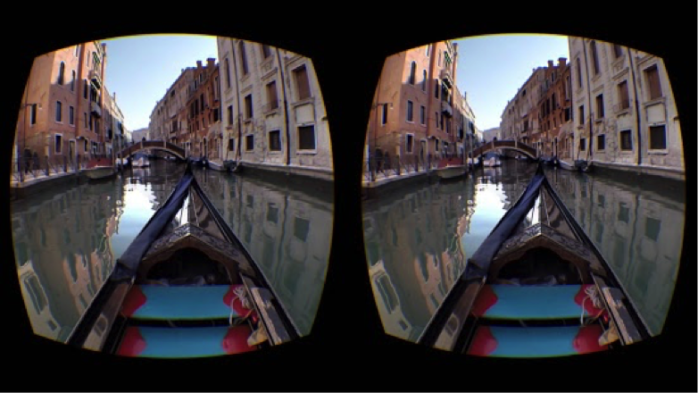
When online shopping tipped in the early 2000’s, consumers rejoiced. They saw the new technology as a way to avoid ever-stepping foot in a retail store again. No more dealing with crowds or lines, no more screaming babies, and heck, no more leaving the house in general. All you needed was a strong Internet connection and shopping was one click away.
Well today, it appears that the retail experience is poised for a comeback, but not in the way you might think. Shoppers will soon be able to tour their favorite department stores, try on new clothes, and maybe even eat at a food court without ever exiting the comfort of their home. This 3-D level of experiential shopping is powered by virtual reality technology, meaning in the next several years, ecommerce websites could be synonymous with v-commerce.
Origins In Gaming
The modern day popularity of virtual reality owes it’s origins to the gaming community. With the emergence of the Oculus Rift headset, Facebook has created its own VR ecosystem featuring 250 available apps. Even more staggering, Google Play has announced some 2 million apps dedicated to VR. This kind of massive investment from two mega companies tells us all we need to know: virtual reality will soon become the norm. In fact, according to Piper Jaffray 500 million VR headsets could be sold by 2025. So it’s wise for brands to begin strategizing now.

Why ecommerce?
Over the past three years, digital marketers have seen unprecedented gains in mobile activity. Smartphones have seen precipitously rising conversion rates since 2014, coinciding with the worldwide mobile takeover.

Retailers see virtual reality as a gateway to connecting with the mobile crowd on an interpersonal level, in what they call “experiential retail practices.” These practices are nothing new, as brands like the Home Shopping Network have been constantly working on website optimization to cater to the user experience. But of course, this kind of optimization is merely 2-dimensional. Virtual reality is proving to be a much bigger step into an omnichannel, seamless shopping experience.

According to a Walker Sands for its Future of Retail Study, 35% of consumers say they would give virtual reality a chance. Although still early in the process, this fairly high level of interest is enough motivation for tech companies to improve and integrate the technology.
Will Brick-and-Mortar Stores Still Exist?
VR is still in its infancy, and there are many kinks to iron out. Most notably, how will users be able to “feel” the items they are virtually shopping for? If you “try on” a shirt from a virtual store, can you feel the cloth? Will you be able to distinguish gold from silver while touring a virtual Zales store? The answer is likely yes, but don’t expect such a high level of immersion to be released tomorrow.
Even though there are 685 virtual reality start-ups in existence today, the technology will still take several years to fully optimize. Plus, there’s the issue of getting consumers to purchase VR software, which isn’t cheap (Oculus Rift – $599, HTC Vive – $799). Retailers will have to beef up their marketing toolkit in order to sell it to the public, which will be an uphill battle at first. For now, let’s see how eBay fares with their newly released virtual reality department store app. If it pans out, expect to see other retailers following close behind.

